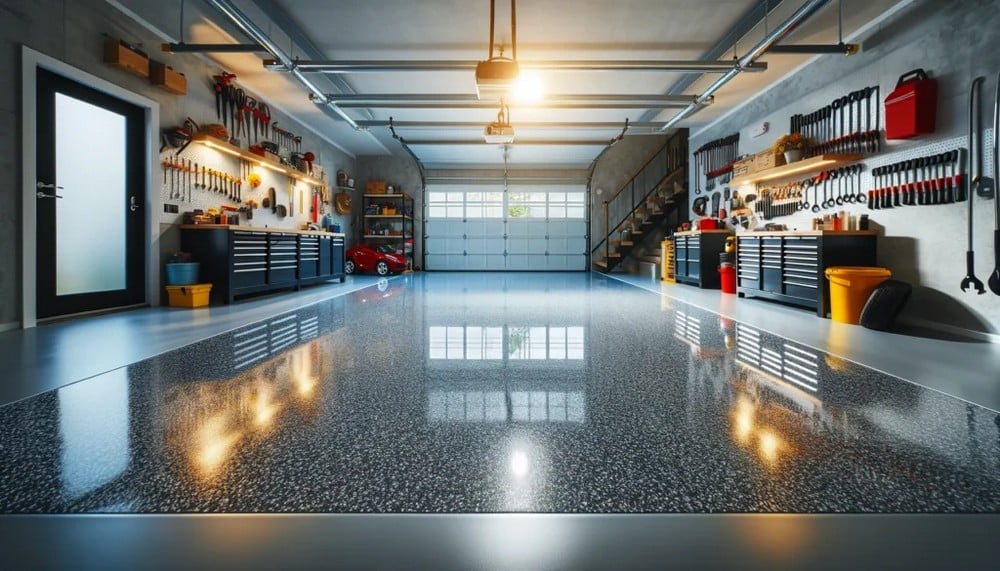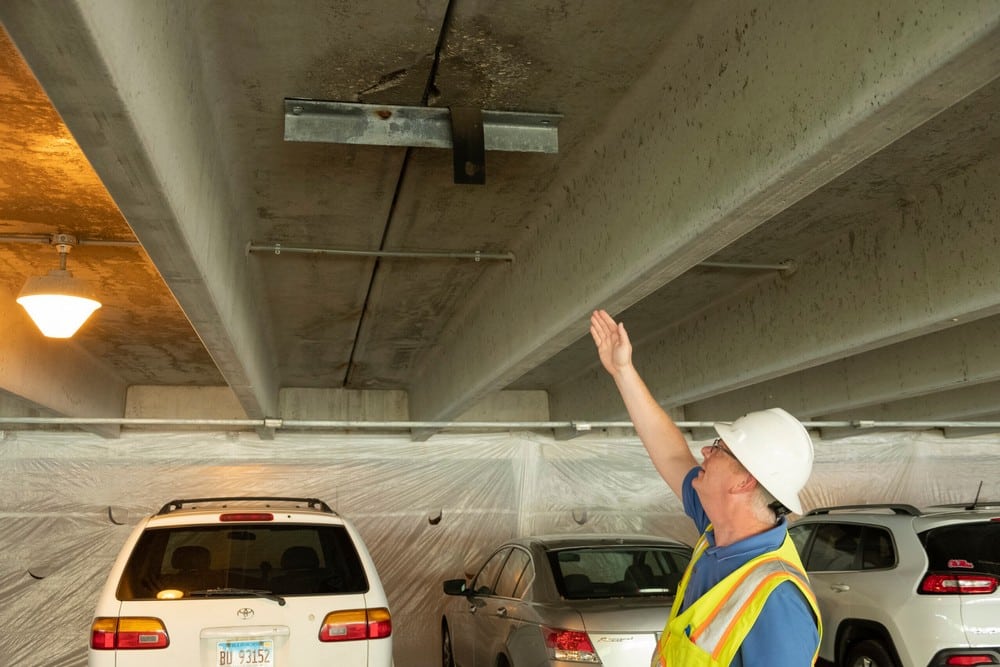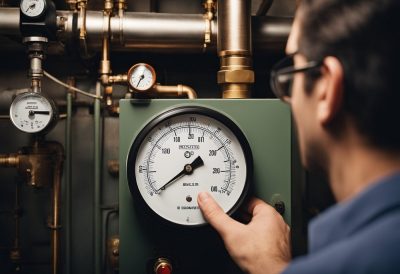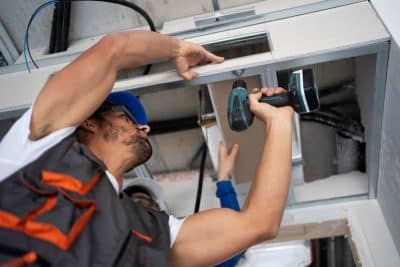
The importance of parking garage restoration in enhancing safety and reducing risks is often underestimated. Through thorough structural improvements, lighting upgrades and modern security measures, restoration projects can considerably mitigate the potential for accidents and criminal activity. Regular inspections and maintenance further contribute to this, enabling early detection of potential hazards. Yet, the intriguing question remains: how exactly do these restorations make parking garages safer and what innovative technologies are paving the way for future improvements?
Understanding Parking Garage Restoration
Delving into the domain of parking garage restoration, it is essential to establish a thorough understanding of the concept. This process involves a detailed diagnosis of the structure’s condition, which includes evaluating its deteriorating components, material deficiencies, and functional obsolescence. The primary goal of parking garage restoration is to maximize the facility’s lifespan through strategic maintenance and repair actions.
An important factor in this process is the implementation of effective maintenance strategies. Regular inspections and preventive maintenance can help identify potential issues before they escalate, thereby saving on costly repairs and prolonging the structure’s serviceability. These strategies can range from timely patching of concrete cracks to the repair or replacement of damaged reinforcement bars.
Equally important is the consideration of parking design during restoration. The design should not only facilitate smooth traffic flow and driver safety but also consider aspects like drainage, lighting, and signage. The design should also account for the possible future demands and changes in vehicle technologies.
Structural Integrity Enhancements
Boosting the structural integrity of a parking garage during restoration plays an instrumental role in enhancing its overall durability and service life. A key component of this process is load bearing analysis, which evaluates the capacity of the structure to withstand the weight of vehicles and environmental stress.
Reinforcement techniques, such as the use of steel bars or fibers, are then applied based on the load bearing analysis to bolster the strength of the structure. Material selection is another vital aspect, with the choice of high-quality concrete and steel essential in guaranteeing long-lasting durability.
Moreover, corrosion prevention measures, such as the application of surface treatments and the use of corrosion-resistant materials, are employed to protect the structure from environmental damage. Foundation assessment is also conducted to confirm that the base of the structure is solid and capable of supporting the entire structure.
In areas prone to earthquakes, seismic upgrades are implemented to improve the structure’s ability to withstand ground movements. Finally, regular maintenance protocols are established to monitor the condition of the structure and address any issues promptly. Improving structural integrity consequently enhances safety and reduces risks in parking garages.
Improved Lighting Systems
Incorporating improved lighting systems into parking garage restorations can greatly enhance visibility and safety. The advent of LED technology has revolutionized the lighting landscape, offering superior luminosity compared to traditional lighting systems. Remarkably, these LED systems are characterized by high energy efficiency, reducing operational costs substantially.
User experience in parking garages is greatly improved with enhanced lighting. It aids in easier navigation and reduces the risk of accidents. Recent design innovations have prioritized the integration of smart systems in lighting technology. These systems can adapt to environmental conditions, adjusting brightness levels accordingly and contributing to energy conservation.
Furthermore, the environmental impact of lighting systems is a growing concern. LED technology addresses this concern with its lower energy consumption and reduced carbon footprint. The cost effectiveness of LED systems extends beyond energy savings; they also require less maintenance due to their long lifespan, which optimizes maintenance practices in the long run.
Upgrade in Security Measures
The next phase in the restoration of the parking garage involves upgrading security measures, which is of paramount importance considering the safety concerns in public spaces. This phase comprises the implementation of advanced surveillance systems that utilize cutting-edge technology for real-time monitoring and threat detection. It also includes enhanced lighting for safety, which works in synergy with the surveillance systems, and improved access control measures to manage and restrict unauthorized entry.
Implementing Advanced Surveillance Systems
A profound enhancement in the security measures of our parking garage can be achieved through the implementation of advanced surveillance systems. This shift towards sophisticated surveillance technology is essential to crime prevention and enhancing parking monitoring.
The modern surveillance systems offer a plethora of safety features. These range from high-resolution video recording, facial recognition, to license plate recognition, all of which contribute to a secure parking environment. System integration is another vital aspect. By integrating these systems with existing security infrastructure, it amplifies the overall efficiency, creating a cohesive and robust security network.
Remote access is another advantage of these systems. It allows security personnel to monitor the garage in real-time from any location, ensuring rapid response to any security threats. Additionally, these systems are equipped with data analytics capabilities, which aid in identifying patterns in criminal behavior, thereby bolstering the proactive approach towards crime prevention.
However, the implementation of these systems is not without challenges. Privacy considerations are paramount, demanding that surveillance measures comply with applicable laws and respect individual privacy. To summarize, integrating advanced surveillance systems in parking garages not only improves safety but also notably reduces risks, albeit with due privacy considerations.
Enhanced Lighting for Safety
Moving from surveillance systems, another significant upgrade to security measures in parking garages is enhanced lighting for safety. A well-thought-out lighting design is crucial in guaranteeing visibility and deterring potential criminal activities. It contributes greatly to the overall security of the parking structure by increasing visibility and minimizing shadowed areas where potential threats could lurk.
In the context of parking garages, the lighting design should focus on two critical aspects: brightness and coverage. Brightness refers to the intensity of light, which needs to be sufficient to illuminate the garage, especially during night hours. Coverage, on the other hand, guarantees that all areas within the garage, including ramps, corners, and parking spots, are well-lit.
In addition to improving safety, an efficient lighting design can also contribute to energy efficiency. Implementing LED lights, for example, can reduce energy consumption while providing bright, consistent lighting. Sensors and timers can also be employed to manage the lighting system effectively, guaranteeing lights are only on when necessary, thereby further reducing energy use. These enhancements not only improve safety but also contribute to sustainability and cost-effectiveness, making them a crucial component of modern parking garage restoration.
Improved Access Control Measures
Building upon the foundation of enhanced lighting, improved access control measures represent another pivotal upgrade in the security measures for parking garage restoration. These measures primarily focus on accessibility upgrades and technology integration, ensuring only authorized personnel gain entry.
Accessibility upgrades involve replacing outdated entry mechanisms with modern, sophisticated systems. Touchless entry and exit points, enabled by radio-frequency identification (RFID) or biometric recognition, reduce human intervention, thereby minimizing the risk of unauthorized access. By incorporating technology integration, these systems can be remotely monitored and controlled, enhancing security vigilance and response time.
Furthermore, integration allows the system to link with other security components—like CCTV and alarm systems—creating an all-encompassing security ecosystem. In the event of an unauthorized entry attempt, the system can trigger alarms, lock down areas, or alert security personnel, thereby mitigating potential threats.
Another significant aspect is data collection. Advanced access control systems can log entry and exit data, providing valuable insights for security audits and future system improvements. This data can help detect patterns, identify weak points, and forecast possible security breaches, enabling proactive preventive measures.
Risk Reduction Through Restoration
The process of parking garage restoration greatly contributes to risk reduction by enhancing structural integrity and minimizing the potential for accidents. A meticulous focus on structural stability guarantees the longevity of the facility, while mitigating the possibility of unpredictable damages. In addition, thorough restoration practices can drastically decrease the likelihood of accidents, thereby assuring the safety and well-being of the garage users.
Enhancing Structural Integrity
How does one increase the lifespan and safety of a parking garage? Enhancing structural integrity, a key aspect of risk reduction, involves a multifaceted approach. To begin with, the garage’s load bearing capacity must be assessed. Inspection protocols should include thorough testing of structural elements to guarantee they can withstand the weight of vehicles and environmental stressors.
Corrosion resistance is another critical factor. Materials used in the garage must be capable of withstanding elements such as water, salt, and extreme temperatures. Material durability is of paramount importance in safeguarding the structural integrity, and this can be achieved through the use of high-quality, resilient construction materials and protective coatings.
Maintenance strategies also play an essential role in enhancing structural integrity. Regular inspections and timely repairs can prevent extensive damage and subsequent safety risks. Design upgrades, when necessary, should focus on increasing the garage’s resilience against external and internal stressors.
Reinforcement techniques, such as the use of steel bars or fibers, can strengthen the garage’s structure and improve its load-bearing capacity. Finally, adherence to safety regulations is a non-negotiable aspect of structural enhancement. By implementing these measures, a parking garage’s safety and longevity can be greatly improved.
Minimizing Accident Potential
While enhancing the structural integrity of a parking garage is a vital element in overall risk reduction, it is equally important to address the potential for accidents within these structures. To minimize accident potential, a systematic approach that includes accident analysis and safety audits is necessary.
Accident analysis involves the systematic review of past incidents to identify common factors and trends. This process helps to highlight areas of concern that may have been overlooked and can guide future restoration efforts. Safety audits, on the other hand, are proactive assessments that identify potential risks before they become problems. Audits examine the functionality of safety systems, such as lighting and signage, and assess the physical conditions of the structure, including the condition of the pavement, railings, and ramps.
Case Studies: Before and After Restoration
Despite often being overlooked, parking garages play an important role in urban planning and architecture. A comparative analysis of two case studies provides a clear understanding of how restoration can enhance safety and reduce risks in parking garages.
In the first case, a deteriorating parking facility in the heart of a busy downtown area was restored using strategic design strategies. The restoration process began with a thorough evaluation of the structure’s condition, followed by the implementation of maintenance best practices. Structural repairs, waterproofing, and the installation of modern safety features were vital elements of this restoration. Post-restoration, this facility saw a significant decrease in vehicular accidents and pedestrian injuries.
The second case involved a suburban parking garage that was frequently subjected to harsh weather conditions, leading to accelerated wear and tear. Through a planned restoration process, the garage was equipped with weather-resistant materials and enhanced lighting. These changes improved visibility, reduced slip-and-fall incidents, and extended the structure’s lifespan.
In both cases, restoration not only enhanced safety but also mitigated potential risks, demonstrating the importance of continuous maintenance and strategic design in parking garages. These restorations serve as compelling examples of how effective planning and execution can transform aging infrastructures into safe and efficient facilities.
Future of Safe Parking Garages
Looking towards the horizon of urban planning and architecture, the future of safe parking garages is set to be shaped by an array of innovative technologies and design strategies. Automated parking systems, for instance, are poised to play a pivotal role in maximizing safety and efficiency. These systems use computerized mechanisms to transport vehicles from the entrance to an available parking space, reducing human error and enhancing security.
Adopting eco-friendly materials in parking garage construction is another progressive strategy. These materials, often recycled or sustainably sourced, not only mitigate the environmental impact of construction but also enhance the longevity and safety of the structures through their inherent durability and resilience.
In addition, advancements in LED lighting and surveillance systems are expected to further amplify safety measures. LED lights provide superior illumination, improving visibility and reducing shadowed areas, while modern surveillance systems allow for real-time monitoring and quick response to potential security threats.
Frequently Asked Questions
What Is the Average Cost of a Full-Scale Parking Garage Restoration?
The average cost of a full-scale parking garage restoration varies based on numerous cost factors, including size, location, and specific restoration techniques used. However, typically it ranges between $5 and $15 per square foot.
How Long Does a Typical Parking Garage Restoration Project Take?
A typical parking garage restoration timeline varies based on size and damage severity; however, project phases generally span from 6-12 months. This includes assessment, planning, execution, and final inspection, ensuring safe, efficient use upon completion.
Can a Parking Garage Still Operate During the Restoration Process?
Yes, a parking garage can maintain temporary operations during restoration, provided that stringent safety measures are implemented. However, the level of operation often depends on the extent and nature of the restoration work.
Are There Any Environmental Benefits to Parking Garage Restoration?
Parking garage restoration incorporates sustainability practices, particularly through the use of eco-friendly materials. This process reduces environmental impact, promotes energy efficiency, and contributes to the overall health of surrounding ecosystems.
What Kind of Maintenance Is Required After a Parking Garage Has Been Restored?
After restoration, routine inspections and preventive measures are essential for maintaining parking garages. This includes regular structural assessments, concrete sealing, waterproofing, and addressing minor wear and tear issues to guarantee structural integrity and safety.









